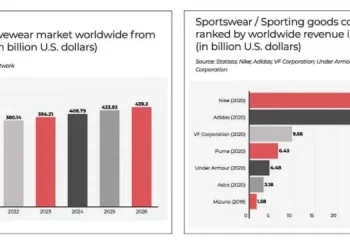
Sampath Bank faced many challenges in adjusting to the pandemic. Transitioning into a wholly digital environment and an entirely new operating model under pandemic-related restrictions was no easy feat. However, thanks to the solid progress made on the digital front in the recent past, the Bank was able to make the transition in a matter of days to ensure uninterrupted operations. Equally importantly, Sampath Bank played a vital role in stabilizing the economy by the disbursement of the relief package for COVID-affected businesses and individuals. The Bank extended phase I of the Covid – 19 debt moratorium to over 50 percent of its loan book last year, while 29 percent of the loan book remained under phase II of the debt moratorium in 1Q 2021. Sampath Bank also actively participated in disbursing the Saubhagya Renaissance scheme to eligible customers. Where necessary, the Bank also took its initiatives to assist customers in tiding over the difficult times.
As the pandemic situation continues to evolve and bring fresh challenges, Sampath Bank capitalized on the lessons learned in the past to strengthen resilience and accelerate its transformation to the post- pandemic world. At the same time, the Bank reiterates its commitment to rolling out the new relief measures proposed for 2021. Meanwhile, the Bank subdivided its ordinary shares in the proportion 01:03. As a result, the number of shares increased from 381,457,985 to 1,144,373,955. The Bank recorded a Profit before tax (PBT) of 6.1 billion rupees in 1Q 2021 compared to three billion rupees in 1Q 2020, denoting a growth of 101 percent, while Profit after Tax (PAT) increased by 83 percent to 4.6 billion rupees from 2.5 billion rupees recorded in the first quarter of 2020. Resilient performance of all business lines and improved credit quality helped bolster Sampath Bank’s performance in the first quarter of 2021. The Sampath Group also registered significant growth in 1Q 2021, as evinced by the improvement in PAT and PBT in the first quarter of the year. The Group reported a 5.1 billion rupees PAT and a 6.7 billion rupees PBT for the period under review, denoting a growth of 90.7 percent and 103.5 percent, respectively, compared to the figures reported the same period in the previous year.
Net interest income (NII) declined by 7.7 percent during the period under review to 9.2 billion rupees from 9.9 billion rupees recorded in the corresponding period in 2020. The drop in the NII is attributed to the prevailing low-interest- rate environment. However, the Bank continues to proactively monitor all variables that are likely to impact the NII to ensure a sustainable return. Overall, interest income for the period under review decreased by 3.8 billion rupees to 20.7 billion rupees compared to 24.5 billion rupees recorded for the corresponding period in 2020, a decline of 15.4 percent. During the first quarter of 2021, the Bank registered 11.5 billion rupees in interest expenses, a 20.7 percent decline against the corresponding period in 2020.
The Bank’s NFBI comprises credit, trade, and card and electronic channel-related fees and commissions. Driven by higher business volumes in these areas, NFBI for the quarter under review grew to 2.6 billion rupees, a 15.8 percent increase compared to 2.2 billion rupees recorded in 1Q 2020. Net other operating income grew by 16.9 percent during the period under review, led by an increase in realized exchange income, attributed to a 7.3 percent depreciation of the Sri Lankan Rupee against the US Dollar. Benefitting from the rupee depreciation, net other operating income for the first three months of 2021 increased to 2.7 billion rupees, compared to 2.3 billion rupees reported during the corresponding period in 2020. On the other hand, due to the currency depreciation, the Bank incurred a net trading loss of 335 million rupees due to mark-to-market losses on forwarding exchange contracts. Accordingly, the Bank’s net exchange income from foreign exchange transactions amounted to 2.3 billion rupees for the period under review. The Bank’s total operating expenses, which amounted to 5.1 billion rupees in 1Q 2020, increased by 6.9 percent to 5.5 billion rupees in 1Q 2021. Higher personnel expenses mainly contributed towards this increase. However, thanks to stringent cost containment strategies, other expenses decreased by 6.4 percent in 1Q 2021 compared to the corresponding period in 2020. Meanwhile, owing to the overall increase in operating expenses, Sampath Bank’s cost- to-income ratio (excluding taxes on financial services) increased to 38.9 percent at the end of March 31, 2021, considerably higher than the 37.1 percent reported for the corresponding period in 2020.
Impairment charges for the period under review dropped by 75.7 percent compared to 1Q 2020 and stood at 1.2 billion rupees at the end of the quarter ended March 31, 2021. The reason is primarily due to higher impairment provisions made in the first quarter of last year. The first quarter of 2020 saw the spread of COVID-19 in Sri Lanka, prompting the Government to declare a nationwide lockdown from March 2020 for two months. This unique situation created uncertainties which the country has never seen before. After a careful assessment of the problem and considering the possible impact on the Sri Lankan economy and its direct impact on the Bank’s credit quality, Sampath Bank prudently decided to increase its impairment provision for 1Q 2020 substantially. However, commencing from the latter part of the year 2020, the Bank saw an improvement in credit quality among customers who did not obtain the moratorium, which is reflected in the decrease of stage three loans by 4.4 percent. This factor also contributed to the reduction of the impairment provision compared to 1Q 2020.
From 1.11 trillion rupees reported as of December 31, 2020, Sampath Bank’s total asset base grew by 3.7 percent (annualized 15.1 percent) in 1Q 2021 to reach 1.15 trillion rupees as of March 31, 2021. Gross loans and advances grew by 2.7 percent (annualized 10.9 percent) to 779 billion rupees as of March 31, 2021. Meanwhile, the total deposit base increased by 28 billion rupees for the same period, to 914 billion rupees at the reporting date, a growth of 3.2 percent (annualized 13 percent). The Bank’s CASA ratio at the end of 1Q 2021 stood at 41.6 percent.
Sampath Bank recorded the highest cash dividend payout ratio for 2020 compared to its peers despite the challenging economic conditions.





